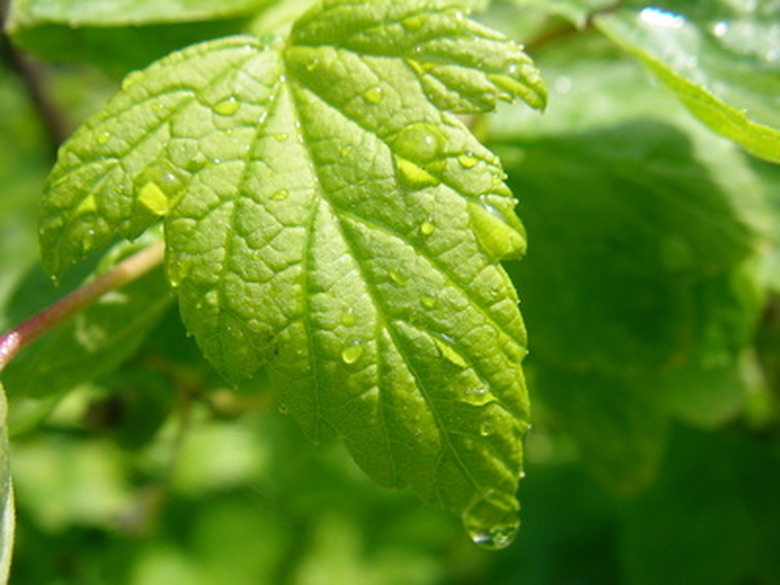Black Leaves On Plant
Leaves of plants turn black for any of several reasons, many of which involve diseases. The untimely loss of the natural coloring of leaves is never a good sign. Keeping plants healthy requires a delicate balance of several factors. An awareness of the possible causes of the blackening of leaves—in part or in whole—may help you respond quickly to discoloration, minimizing the damage to your plants.
Bacterial Leaf Diseases
The most obvious possibility when a plant's leaves turn dark is disease. Bacteria are microscopic organisms that can multiply quickly and spread across a plant, causing leaves to turn black. According to the University of Minnesota Extension website, more than 170 species of bacteria can cause diseases in plants. Often the first sign is the appearance of black spots on leaves.
- Leaves of plants turn black for any of several reasons, many of which involve diseases.
- Often the first sign is the appearance of black spots on leaves.
Bacterial leaf spot and tip burn often cause the leaf to turn yellow at the tip. Small yellow dots will begin to appear across the leaf. These spots eventually turn brown and then black. Eventually the leaves die and drop from the stem. By then, however, the bacteria may have spread to other leaves.
Too Wet
Sometimes the gradual blackening of the leaves on a plant is caused by excess moisture. Plants need water to survive, but they can drown, too. Too much water can inundate root systems and cause root rot, which will first cause root systems to decompose. It then becomes a systemic problem that reaches the rest of the plant. By the time leaves begin turning black, it is usually too late to salvage the plant. The leaves typically turn yellow first. If treated quickly, the problem can be solved. Removal of plants from the oversaturated conditions and trimming away of any affected roots may resolve the issue.
- Bacterial leaf spot and tip burn often cause the leaf to turn yellow at the tip.
Too Dry
While keeping a plant in soil that is too wet can cause problems for a plant, keeping one in conditions that are too dry can have an equally severe effect. Plants need water—some more than others. If a plant does not get enough water, it will dry out and die. This will lead to brown or black leaves, followed by death of stems and roots.
Fertilizer
Too much fertilizer can cause a plant's leaves to turn black. Blackness of leaves often results from an overdose of salts in the soil. A combination of fertilizer and soil that does not drain well can create salt buildup in the soil, which can cause leaf discoloration. Watering plants in a well-drained pot that allows water to flow through the bottom will help prevent such a buildup.
- While keeping a plant in soil that is too wet can cause problems for a plant, keeping one in conditions that are too dry can have an equally severe effect.
- A combination of fertilizer and soil that does not drain well can create salt buildup in the soil, which can cause leaf discoloration.
